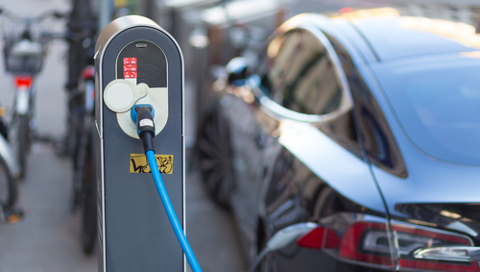
We Need to Electrify As Much Transportation As We Can
April 4, 2016
https://youtube.com/watch?v=JXIYBGCRnvM
Transcript:
JESSICA DESVARIEUX, PRODUCER, TRNN: Welcome to the Real News Network. I’m Jessica Desvarieux in Baltimore.
Folks are lining up to reserve electric car automaker Tesla’s Model 3. It’s considered to be one of the first electric cars for the mass market at an expected price tag of 35 thousand dollars. Tesla’s CEO, Elon Musk, will be unveiling the vehicle on Thursday evening, so we can’t show you what it will actually look like. But in this segment we wanted to get beyond the consumerism and ask, will this be a game changer for the automobile industry in America and the environment?
Now joining us to help us answer that question is Richard Heinberg. He’s a senior fellow at the Post Carbon Institute. Thanks so much for joining us, Richard.
RICHARD HEINBERG: It’s a pleasure, Jessica.
DESVARIEUX: So, Richard, why has it taken so long for an affordable electric car to sort of come to the market? I’m reminded of the 2006 documentary “Who Killed the Electric Car?” which really highlights how we essentially went from having electric cars on California roads in the ’90s to then, eventually, shredding and destroying those very same vehicles years later. So my question to you, Richard, is, who killed the electric car?
HEINBERG: Well, the bosses at the Detroit automakers decided back in the 1990s that there wouldn’t be a mass market for the electric car because of the short range of the vehicles. They thought consumers wouldn’t buy a car if it didn’t have a two to three hundred mile range, and the batteries at that time were not capable of delivering that kind of range. So even though they built some prototypes and sent them out to drivers, they never produced a mass market car.
Today, battery technology has improved enough so that it is possible to produce an electric car for the masses with at least a 200-mile range, and that’s what’s anticipated for the Tesla Model 3.
DESVARIEUX: Okay. there are some folks that are saying that this isn’t as big of a game changer as people are making it out to be, because essentially you’re getting power to charge your electric vehicle from fossil fuel sources like coal. Do you agree with that?
HEINBERG: Not entirely. First of all, the energy mix is different in different parts of the country. Some parts of the country, electricity is mostly coming from coal. In other parts of the country the mix is more oriented toward natural gas, hydro and renewables. So, first of all, it depends on where you’re getting your electricity from.
And second, you know, if you look out at the energy transition that we’re just beginning right now, away from fossil fuels toward renewables, it’s clear that one of the main strategies that we’ll have to pursue during this energy transition is electrification. Right now only about 20 percent of the final energy that we use in the United States is in the form of electricity. The rest is in the form of liquid fuels for transportation, energy for high heat industrial processes and so on.
We have to electrify as much of that energy usage as we can, because most of our renewable sources of energy produce electricity. That’s true of solar and wind, geothermal and hydro power. So we need to electrify as much transportation as we can.
DESVARIEUX: Okay. You have some automakers, you know, really touting this as a bright future, that we’re going to see more and more electric cars hit the market. I want to ask you about the role of cheap oil. Do you think that threatens he growth of the electric car industry?
HEINBERG: Well, probably not over the long run. We’re headed toward electric cars one way or the other, I think. However, over the short run it definitely takes some wind out of the sails, because from the consumer’s standpoint the biggest draw for an electric car is that over the lifetime of ownership the operating costs are much lower, so if you have cheap gas that changes that differential a bit, so that there’s not as much of an advantage.
DESVARIEUX: Okay, let’s talk about the future. What would a truly green transportation system look like, and are there some states or countries that are really laying out a road map to get us there?
HEINBERG: Well, a truly green transportation system probably wouldn’t rely on electric cars that much because it wouldn’t be relying on cars that much. Cars are an inherently inefficient mode of transportation. I mean, think about it. Most cars just have a driver and maybe one passenger, and meanwhile you’re dragging around two tons of metal, glass and plastic in order to get those one or two people where they want to go.
Much more efficient modes of transportation are light rail, any kind of public transportation, actually. So what we really need is to build up more rail transport and get people walking and bicycling as much as possible.
DESVARIEUX: Okay. Richard Heinberg, thank you so much for joining us.
HEINBERG: It’s been a pleasure. Thanks, Jessica.
DESVARIEUX: And thank you for joining us on the Real News Network.
DISCLAIMER: Please note that transcripts for The Real News Network are typed from a recording of the program. TRNN cannot guarantee their complete accuracy.
Electric car image via shutterstock.
